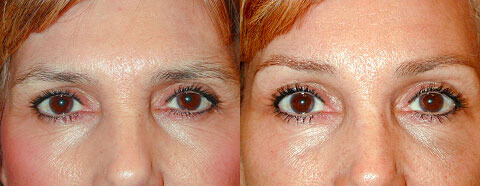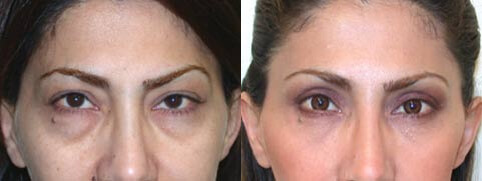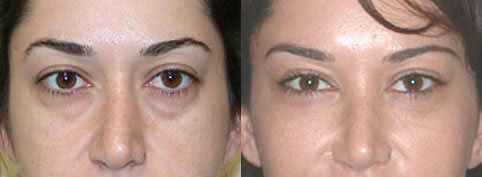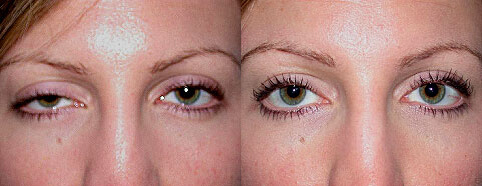What is Cosmetic Surgery?

Cosmetic surgery is a rapidly evolving surgical discipline, which has undergone a tremendous evolution over the last decade. Like other fields in medicine, cosmetic surgery is in a constant state of change. This is extremely important, as, without meaningful change, progress could not be achieved.
One of the important changes which have led to significant surgical advancements within cosmetic surgery is that very precise specialties have evolved. This has allowed patients the opportunity to seek out “super specialists” who can provide the best surgical results.
Ophthalmic Plastic Surgery is the specialty that deals with cosmetic surgery of the eyelids and surrounding areas, including the forehead, eyebrows, upper lids, lower lids, and mid-face or cheeks. Only a proven expert should be trusted when it comes to one’s eyes.
That means the best-trained individual with the most experience and a track record of success. It is clear that only a cosmetic eyelid specialist should be the one to perform surgical procedures having to do with your eyes.
Endoscopic Brow Lifts

Dr. Massry considers the eyebrows as the starting point of successful upper eyelid lifts (blepharoplasty). The brows must be in an appropriate position to attain beautiful, youthful and natural appearing upper eyelids.
Dr. Massry is an expert in endoscopic eyebrow lifting. He is innovative in his surgical technique and can contour the eyebrow specifically to the patient’s desires.
Endoscopic Eyebrow Elevation (browlift) is the most current and state-of-the-art method of forehead and eyebrow lifting. Traditional cosmetic brow lifts are extensive surgical procedures (large incisions from ear to ear) with prolonged postoperative recovery. Conversely, the endoscopic brow lift is a minimally invasive procedure, with quick recovery.
The procedure is performed using a specialized lighting system and camera which allows clear and crisp visualization. This is important, as surgery is performed through very small incisions, which is extremely advantageous in relation to healing and recovery. Only specialists with specific endoscopic surgical training should perform this form of cosmetic surgery.
Eyelid Lift (Blepharoplasty)

Blepharoplasty surgery is widely considered a simple excision of skin and fat from the upper and/or lower lids by most cosmetic surgeon’s. Nothing can be further from the truth.
Blepharoplasty surgery requires a unique understanding of eyelid architecture. Over excision of skin, muscle or fat can be devastating. An expert blepharoplasty surgeon must be able to preserve (reposition) fat, form a natural lid fold (crease), elevate a weakened eyelid muscle (ptosis repair), tighten the outer corner of the eyelids (canthoplasty), and have an overall understanding what a beautiful eye looks like.
Blepharoplasty is a minimally invasive cosmetic surgery procedure that restores a youthful and energetic look. Surgery can be performed with minimal sedation or local injections of anesthesia. Although blepharoplasty is a relatively straightforward procedure, it is still delicate surgery which requires a specialist to attain the desired results.
Middle face (Cheek) lift

Addressing the sagging cheek is a relatively new concept in cosmetic surgery. The cheek can be elevated to give a fuller and more youthful appearance to the face through surgery on the lower lid (incisions inside the eyelid), or through an endoscopic approach (with incisions behind the hairline and in the mouth).
Both procedures are generally scar less and powerful. Often times this surgery can be used to elevate lower lids which have been pulled down from previous lower lid surgery.
A cheek lift is a procedure whereby the middle face is elevated. This can be performed through an eyelid incision or with the endoscope through an incision behind the hairline of the temple. This cosmetic surgery is only indicated in specific instances.
Canthoplasty
A canthoplasty is a surgical procedure designed to change the architecture and/or appearance of the corners of the eyes (where the upper and lower eyelids meet) and is typically performed to address eyelid laxity (looseness).
A canthoplasty is commonly performed in conjunction with other eyelid surgery, to aid in stabilizing a normal position of the eyelids.
Ptosis repair

Ptosis (pronounced “toe-sis”) is a condition in which the upper eyelid droops. This should not be confused with extra skin, fat or muscle to the eyelid, which is typically addressed with blepharoplasty surgery. In Ptosis, the upper eyelid margin (where the eyelashes are) falls to – or covers – the pupil when the eye is open. This leads to visual obstruction.
When Ptosis can be shown to reduce vision (peripheral vision), its correction is covered by most insurance plans. Proving visual deficit requires photo documentation and specialized testing (visual field testing), which can be performed in the office. If the degree of Ptosis is not as severe (does not affect vision), it is considered elective surgery and can be corrected as a cosmetic surgery procedure.
Ptosis can be caused by congenital or acquired defects in the muscle (or it’s tendon), which lifts the eyelid. It is also associated with growths, which weigh the eyelid down, or neurological disease. The most common reason Ptosis occurs is simply weakening of the muscle (or it’s tendon), which occurs with age.
Ptosis correction is a minor surgical procedure, involving tightening of the muscle that lifts the eyelid. This can be performed through the eyelid skin or from the inside of the eyelid. The surgical approach taken depends on specific findings and testing performed during the preoperative evaluation. Incisions for Ptosis repair are typically on the inside of the eyelid and are not visible, once stitches are removed and the full course of healing has taken place.



